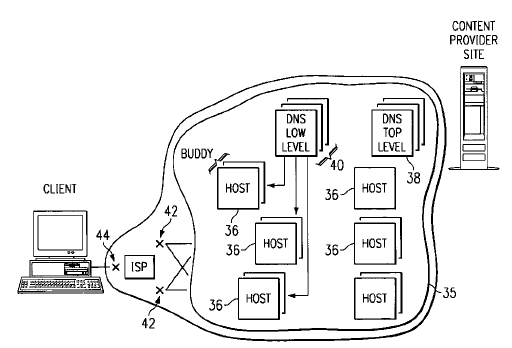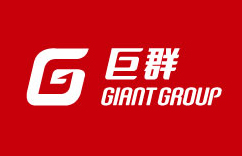【智財評析】「共同侵權」(Divided Infringement)行為之認定範圍被放寬:美國聯邦巡迴上訴法院第二次全院庭審Akamai v. Limelight案評析
2019-09-16 陳志清 律師/專利師(資格)

【重要美國專利案例評析】
美國聯邦巡迴上訴法院於2015年8月13日經由第二次的全院庭審(en banc)一致通過,於Akamai一案[附註1]中作出重要判決:將「共同侵權」(Divided Infringement)行為之認定範圍放寬,在滿足此條件之情況下,被告就需要負擔美國專利法第271條第(a)段「直接侵權」(Direct Infringement)行為之責任,非常值得大家注意!
案件背景事實
原告為Akamai Technologies, Inc.以及The Massachusetts Institute of Technology(以下合稱Akamai),被告為被控侵權人Limelight Networks, Inc.(以下簡稱Limelight),Akamai Technologies, Inc.及Limelight係為市場上提供「內容傳遞網路」(Content Delivery Network,簡稱CDN)服務之競爭者。
於2006年6月22日,原告Akamai於美國麻薩諸塞州聯邦地方法院控告被告Limelight侵害其數件美國專利(案號:1:06-cv-11109),其中,包含被告侵害系爭US 6,108,703專利(標題為”Global Hosting System”,以下簡稱” ’703專利”)之方法項19-21[附註2]與方法獨立項34,其專利代表圖如本文章首頁圖式,而代表性的獨立項34其原文如下:
34. A content delivery method, comprising:
distributing a set of page objects across a network of content servers managed by a domain other than a content provider domain, wherein the network of content servers are organized into a set of regions;
for a given page normally served from the content provider domain, tagging at least some of the embedded objects of the page so that requests for the objects resolve to the domain instead of the content provider domain;
in response to a client request for an embedded object of the page:
resolving the client request as a function of a location of the client machine making the request and current Internet traffic conditions to identify a given region; and
returning to the client an IP address of a given one of the content servers within the given region that is likely to host the embedded object and that is not overloaded.
(Emphasis added.)
‘703專利中之系爭方法項描述了一種提供「內容傳遞網路」服務之方法,而被告Limelight之行為,雖然執行了該專利方法中大多數的步驟,但本身並未執行前述系爭方法項中之所有步驟,其中,包含「標記」(tagging)所欲儲存於伺服器之元件的這個步驟,係要求一定要由客戶自己來進行才行。因此,原告Akamai進一步主張被告Limelight提供相關安裝說明與技術支援服務給予其客戶,仍應當構成專利侵權之行為。
於2009年4月24日,聯邦地方法院判決,這是一個法律問題(matter of law),且認定被告Limelight並不構成侵權行為[附註3]。因此,原告Akamai不服提起上訴。
於2010年12月20日,聯邦巡迴上訴法院合議庭(panel)作出判決,認為被告Limelight並未執行系爭方法項中之所有步驟,且客戶之行為並無法歸責至Limelight。因此,維持地方法院認定被告Limelight並不構成侵權行為的決定[附註4]。
於2012年8月31日,聯邦巡迴上訴法院全院庭審推翻了前述判決,認為被告Limelight的此種行為,應該要討論美國專利法第271條第(b)段之「誘導侵權」(inducing infringement)是否適用,若在符合「誘導侵權」條件之情況下,被告Limelight就需要負起侵權責任。因此,發回地方法院針對是否有「誘導侵權」之行為再進行調查程序[附註5]。Limelight不服,向美國聯邦最高法院提起上訴。
於2014年6月2日,美國聯邦最高法院由全體法官一致通過作出重要判決,認為:當沒有人依照第271條第(a)段有「直接侵權」行為時,被告就不需要負擔第271條第(b)段的「誘導侵權」責任。因此,最高法院推翻了前述聯邦巡迴上訴法院之全院庭審判決並發回更審[附註6]。該案雖然重要,但並非本文章的討論重點故不進行介紹,有興趣的讀者值得一讀該判決內容。
Held: A defendant is not liable for inducing infringement under §271(b) when no one has directly infringed under §271(a) or any other statutory provision.
Limelight Networks, Inc. v. Akamai Technologies, Inc., et. al., 572 U.S. 915, 134 S. Ct. 2111, 189 L.Ed.2d 52 (2014).
於2015年5月13日,案件發回後,聯邦巡迴上訴法院之第二次合議庭繼續討論「共同侵權」行為之成立要件,以及究竟被告Limelight是否有「直接侵權」之行為,其作出判決仍然認為被告Limelight並未執行系爭方法項中之所有步驟,且因為原告Akamai所提出之相關事實並無法證明被告Limelight需要為其客戶之行為來負責。因此,再度維持地方法院認定被告Limelight並不構成侵權行為的決定[附註7]。當然,原告Akamai仍然不服該判決結果,繼續尋求救濟…。Limelight Networks, Inc. v. Akamai Technologies, Inc., et. al., 572 U.S. 915, 134 S. Ct. 2111, 189 L.Ed.2d 52 (2014).
由於本案原告Akamai與被告Limelight的訴訟歷程相當複雜,各級法院曾經作出過的判決相當多,故值得依照時間軸將一些重要事件、其簡單判決結果、以及其案號等簡單整理列表如下供大家參考,讓想要好好瞭解本案始末的讀者可以從頭追蹤,而若是只想要閱讀重要、未被推翻的判決之讀者,就可以快速從下表找出該重要判決之原文內容。
| 項目 | 日期 | 事件概述 |
| 1. | 2006/06/22 | 原告Akamai於美國麻薩諸塞州聯邦地方法院控告被告Limelight侵害其數件美國專利,包括系爭’703專利。 Case No.: 1:06-cv-11109 |
| 2. | 2009/04/24 | 聯邦地方法院判決-被告Limelight不構成侵權(Akamai II)。 Akamai Technologies, Inc. v. Limelight Networks, Inc., 614 F.Supp.2d 90 (D. Mass. 2009). |
| 3. | 2010/12/20 | 聯邦巡迴上訴法院合議庭判決-維持被告Limelight不構成侵權行為的認定(Akamai III)。 Akamai Technologies, Inc. v. Limelight Networks, Inc., 629 F.3d 1311 (Fed. Cir. 2010). |
| 4. | 2012/08/31 | 聯邦巡迴上訴法院全院庭審判決-推翻前述判決,認為應討論是否成立「誘導侵權」行為。 Akamai Technologies, Inc. v. Limelight Networks, Inc., 692 F.3d 1301 (Fed. Cir. 2012) (en banc). |
| 5. | 2014/06/02 | 美國聯邦最高法院判決-推翻前述判決,並發回更審。 Limelight Networks, Inc. v. Akamai Technologies, Inc., 134 S. Ct. 2111 (2014). |
| 6. | 2015/05/13 | 聯邦巡迴上訴法院第二次合議庭判決-仍然維持被告Limelight不構成侵權行為的認定。 Akamai Technologies, Inc. v. Limelight Networks, Inc., 786 F.3d 899 (Fed. Cir. 2015). |
| 7. | 2015/08/13 | 聯邦巡迴上訴法院第二次全院庭審判決-請參考本文章內容介紹(Akamai IV)。 Akamai Technologies, Inc. v. Limelight Networks, Inc., 797 F.3d 1020 (Fed. Cir. 2015) (en banc). |
| (後略) |
案件爭點
本案件的爭點並不簡單,從本案至少讓聯邦巡迴上訴法院作出了四次判決、還有聯邦最高法院曾作出一次判決就可以從中看出端倪。本案件的主要爭點在於:究竟「共同侵權」行為在如何的情況之下才會成立,而行為人才需負擔起美國專利法第271條第(a)段「直接侵權」之責任。
相關法律規定
1. 美國專利法第271條第(a)段,係關於「直接侵權」之規定:
35 U.S. Code § 271-Infringement of patent
(a) Except as otherwise provided in this title, whoever without authority makes, uses, offers to sell, or sells any patented invention, within the United States or imports into the United States any patented invention during the term of the patent therefor, infringes the patent.
(a) Except as otherwise provided in this title, whoever without authority makes, uses, offers to sell, or sells any patented invention, within the United States or imports into the United States any patented invention during the term of the patent therefor, infringes the patent.
2. 關於「共同侵權」(或又人翻譯為「分工侵權」,Divided Infringement),英文也有人稱為”Joint Infringement”,是當一項專利方法項中的所有步驟係被不同的主體來合力完成時,究竟是否可以成立「直接侵權」的認定?那誰需要對此侵權行為來負責?聯邦巡迴上訴法院於先前的BMC Res., Inc. v. Paymentech, L.P., 498 F.3d 1373 (Fed. Cir. 2007) 案中,曾作判決指出「單一行為人」之規則:只有當一方法專利項中之所有步驟皆由單一行為人執行或可歸責至單一行為人時,才有第271條第(a)段之適用;決定是否由單一行為人「引導」或「控制」其他人之行為,係繼續使用「替代責任」(vicarious liability)之判斷方法;當其他人執行該方法專利項中一個或多個步驟之行為,係滿足代理人關係、或合約關係時,該行為人就需要負擔第271條第(a)段之侵權行為責任。
Direct infringement under § 271(a) occurs where all steps of a claimed method are performed by or attributable to a single entity.
BMC, 498 F.3d at 1379–81 (Fed. Cir. 2007).
To determine if a single entity directs or controls the acts of another, we continue to consider general principles of vicarious liability.
BMC, 498 F.3d at 1379.
In the past, we have held that an actor is liable for infringement under § 271(a) if it acts through an agent (applying traditional agency principles) or contracts with another to perform one or more steps of a claimed method.
BMC, 498 F.3d at 1380–81.
BMC, 498 F.3d at 1379–81 (Fed. Cir. 2007).
To determine if a single entity directs or controls the acts of another, we continue to consider general principles of vicarious liability.
BMC, 498 F.3d at 1379.
In the past, we have held that an actor is liable for infringement under § 271(a) if it acts through an agent (applying traditional agency principles) or contracts with another to perform one or more steps of a claimed method.
BMC, 498 F.3d at 1380–81.
3. 至於有所謂的「共同行為人」(joint enterprise),於法條內列出必須證明其具有的四個構成要件,亦附帶列出來如下,簡略翻譯供大家參考:(1) 明示或默示的協議;(2) 其實施之共同目的;(3) 於該目的所可得的金錢上利益;以及(4) 成員於該行為之指引方向上具有相等的控制權利。
Restatement (Second) of Torts § 491 cmt. c.:
A joint enterprise requires proof of four elements:
(1) an agreement, express or implied, among the members of the group;
(2) a common purpose to be carried out by the group;
(3) a community of pecuniary interest in that purpose, among the members; and
(4) an equal right to a voice in the direction of the enterprise, which gives an equal right of control.
A joint enterprise requires proof of four elements:
(1) an agreement, express or implied, among the members of the group;
(2) a common purpose to be carried out by the group;
(3) a community of pecuniary interest in that purpose, among the members; and
(4) an equal right to a voice in the direction of the enterprise, which gives an equal right of control.
聯邦巡迴上訴法院第二次全院庭審(en banc)見解
1. 聯邦巡迴上訴法院於2015年8月13日針對Akamai v. Limelight一案作出了第二次的全院庭審判決,推翻了自己曾經於同年5月才作出過的第二次合議庭判決,原先認定被告Limelight並不構成「直接侵權」行為的見解,現在又變成具有「直接侵權」的責任了。
2. 於2015年5月13日的時候,聯邦巡迴上訴法院之第二次合議庭作出判決,認為一方法項的各步驟如果是由不同人所執行,那麼「單一行為人」會侵權的條件,是其它人所執行的剩餘步驟可以「歸責至」(attributed to)該單一行為人。然後所謂的「歸責至」,只有三種情況:(1) 本人-代理人間之關係(principal-agent relationships),(2) 合約的安排(contractual arrangements),以及(3) 「共同行為人」(joint enterprise)。
這聽起來好像太窄了點…。是的,現在聯邦巡迴上訴法院說以下的兩種狀況都算,需要負擔起侵權責任:(1) 當該實體「引導」(direct)或「控制」(control)其他人執行該方法項步驟之行為,以及(2) 當該行為人之間構成「共同行為人」。
We will hold an entity responsible for others’ performance of method steps in two sets of circumstances: (1) where that entity directs or controls others’ performance, and (2) where the actors form a joint enterprise. (emphasis added)
Akamai Technologies, Inc. v. Limelight Networks, Inc., 797 F.3d 1020, 1022 (Fed. Cir. 2015) (en banc).
Akamai Technologies, Inc. v. Limelight Networks, Inc., 797 F.3d 1020, 1022 (Fed. Cir. 2015) (en banc).
而這次的判決重點在於以下這段:當一被控侵權人之行為有以下的情況時,會被認定為其具有第271條第(a)段之侵權責任:(1) 對專利方法中的一個或複數個步驟的執行行為而限制活動之參與條件,或是因此而獲得利益,以及(2) 訂定該執行行為的方法或時間點。
We conclude, on the facts of this case, that liability under § 271(a) can also be found when an alleged infringer conditions participation in an activity or receipt of a benefit upon performance of a step or steps of a patented method and establishes the manner or timing of that performance. (emphasis added)
Akamai Technologies, Inc. v. Limelight Networks, Inc., 797 F.3d 1020, 1023 (Fed. Cir. 2015) (en banc).
Akamai Technologies, Inc. v. Limelight Networks, Inc., 797 F.3d 1020, 1023 (Fed. Cir. 2015) (en banc).
因此,考慮第271條第(a)段之「直接侵權」時,並不僅僅是考慮上述那三種情況而已,而是需要考慮是否於方法項內之所有步驟,皆可「歸責至」一單一行為人。
Section 271(a) is not limited solely to principal-agent relationships, contractual arrangements, and joint enterprise, as the vacated panel decision held. Rather, to determine direct infringement, we consider whether all method steps can be attributed to a single entity. (emphasis added)
Akamai Technologies, Inc. v. Limelight Networks, Inc., 797 F.3d 1020, 1023 (Fed. Cir. 2015) (en banc).
Akamai Technologies, Inc. v. Limelight Networks, Inc., 797 F.3d 1020, 1023 (Fed. Cir. 2015) (en banc).
聯邦巡迴上訴法院於審閱本案的相關事實後,認為當年聯邦地方法院的陪審團於作出侵權裁定時,是依據「實質證據審查」(substantial evidences)作為基礎。其中,被告Limelight於提供該「內容傳遞網路」服務於其客戶時:
(1) 會要求客戶先簽署一份制式合約,其中並要求客戶若於使用Limelight之服務時,必須要執行”tagging and serving content”的動作。並要求客戶必須提供Limelight所需要的相關資訊於該項服務;另外,若是客戶的伺服器當機時,Limelight的「內容傳遞網路」服務就不需要被執行。因此,Limelight已經對於tagging與serving方法步驟的執行行為作了一個限制其客戶使用「內容傳遞網路」服務之條件(Limelight conditions customers’ use of its content delivery network upon its customers’ performance of the tagging and serving method step)。
(2) Limelight提供給其客戶相關的「分步驟說明」(step-by-step instructions)以及「安裝指南」(Installation Guidelines),包含「標記」(tagging)這個方法步驟之內容,若客戶沒有依照其指示正確實施,其所提供的「內容傳遞網路」服務將無法被實行。因此,Limelight已經訂定了客戶所需執行行為的方法以及時間點,藉由執行該些方法中的步驟,客戶才能使用到Limelight的該項服務(Limelight establishes the manner and timing of its customers’ performance so that customers can only avail themselves of the service upon their performance of the method steps)。
故最後認定被告Limelight的上述行為符合前述的第(1)種-「引導」(direct)或「控制」(control)其客戶之行為來執行方法項中的其他剩餘步驟。因此,聯邦巡迴上訴法院推翻判決,認定被告Limelight需負擔「直接侵權」行為之責任(liable for direct infringement),本案並且再度回到聯邦巡迴上訴法院之合議庭(第三次)繼續審理。
這邊還有個點值得讀者注意,那就是究竟是否為「單一行為人」或是否為「共同行為人」,這兩個情況的認定都是「事實問題」(question of fact),所以上訴法院並不是依據「重新審理」(reviewed de novo)之標準,而是依據「實質證據審查」(for substantial evidence)之標準來進行審理。因此,就這些事實問題的相關舉證內容就變得非常重要。
Whether a single actor directed or controlled the acts of one or more third parties is a question of fact, reviewable on appeal for substantial evidence, when tried to a jury. (emphasis added)
Akamai Technologies, Inc. v. Limelight Networks, Inc., 797 F.3d 1020, 1023 (Fed. Cir. 2015) (en banc).
As with direction or control, whether actors entered into a joint enterprise is a question of fact, reviewable on appeal for substantial evidence. (emphasis added)
Akamai Technologies, Inc. v. Limelight Networks, Inc., 797 F.3d 1020, 1023 (Fed. Cir. 2015) (en banc).
Akamai Technologies, Inc. v. Limelight Networks, Inc., 797 F.3d 1020, 1023 (Fed. Cir. 2015) (en banc).
As with direction or control, whether actors entered into a joint enterprise is a question of fact, reviewable on appeal for substantial evidence. (emphasis added)
Akamai Technologies, Inc. v. Limelight Networks, Inc., 797 F.3d 1020, 1023 (Fed. Cir. 2015) (en banc).
小結
1. 依據本案聯邦巡迴上訴法院之認定,判決被告Limelight之行為構成「共同侵權」,其認定範圍被放寬,故被告Limelight需負擔「直接侵權」行為之責任。因此,日後專利申請權人欲撰寫方法項的申請專利範圍時,一定要很小心撰寫、甚或是避免落入類似對自己不利的情況;而若是其他廠商需要考量避開該申請專利範圍的行為時,則需要考慮自己的行為是否會構成「引導」或「控制」他人之行為、或是否會構成「共同行為人」之情況。
2. 關於是否為「單一行為人」、或是否為「共同行為人」之判斷,於上訴時,聯邦巡迴上訴法院需依據「實質證據審查」(for substantial evidence)之標準來進行審理。因此,當專利權人於訴訟時所需對被控侵權人的行為進行之相關舉證內容就變得非常重要。
3. 在本案聯邦巡迴上訴法院第二次全院庭審之判決後,本案又回到聯邦巡迴上訴法院合議庭,而之後究竟合議庭會如何判決、被告是否又會上訴到最高法院、或本案又回到聯邦地方法院作出最後判決呢?有興趣的讀者可以自行再追蹤看看本案的後續進展…。
本文章之專業內容,僅為提供資訊參考,非作為法律諮詢之用,亦純屬作者個人之意見,不代表本所或作者任何曾任職過單位之立場。
相關參考資料
附註1. 2015年美國聯邦巡迴上訴法院全院庭審(第二次)判決:Akamai Technologies, Inc. v. Limelight Networks, Inc., 797 F.3d 1020 (Fed. Cir., August 13, 2015) (en banc) 案判決原文(網址: http://www.cafc.uscourts.gov/sites/default/files/opinions-orders/9-1372.Opinion.8-11-2015.1.PDF) (最後瀏覽日期:2019年8月19日)。
附註2. 系爭美國專利U.S. 6,108,703,其另一方法獨立項19之原文如下:
19. A content delivery service, comprising:
replicating a set of page objects across a wide area network of content servers managed by a domain other than a content provider domain;
for a given page normally served from the content provider domain, tagging the embedded objects of the page so that requests for the page objects resolve to the domain instead of the content provider domain;
responsive to a request for the given page received at the content provider domain, serving the given page from the content provider domain; and
serving at least one embedded object of the given page from a given content server in the domain instead of from the content provider domain.
附註3. 2009年美國麻薩諸塞州聯邦地方法院判決:Akamai Technologies, Inc. v. Limelight Networks, Inc., 614 F.Supp.2d 90 (D. Mass. 2009)。
附註4. 2010年美國聯邦巡迴上訴法院判決:Akamai Technologies, Inc. v. Limelight Networks, Inc., 629 F.3d 1311 (Fed. Cir. 2010)。
附註5. 2012年美國聯邦巡迴上訴法院全院庭審(第一次)判決:Akamai Technologies, Inc. v. Limelight Networks, Inc., 692 F.3d 1301 (Fed. Cir. 2012) (en banc)。
附註6. 2014年美國聯邦最高法院判決:Limelight Networks, Inc. v. Akamai Technologies, Inc., 134 S. Ct. 2111 (2014)。
附註7. 2015年美國聯邦巡迴上訴法院判決:Akamai Technologies, Inc. v. Limelight Networks, Inc., 786 F.3d 899 (Fed. Cir. 2015)。
延伸閱讀:
消息來源:


